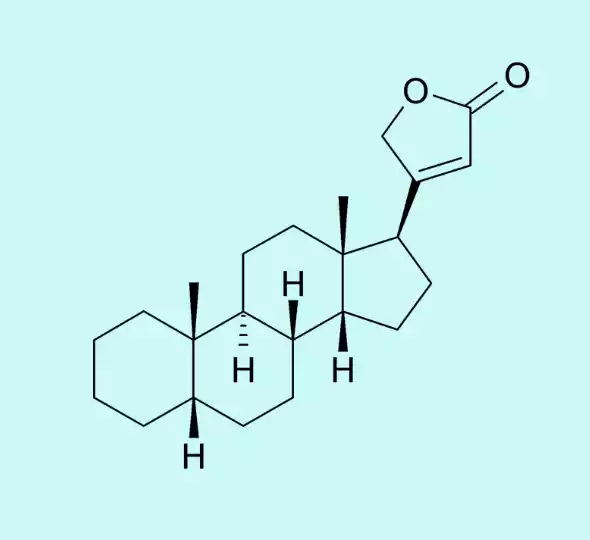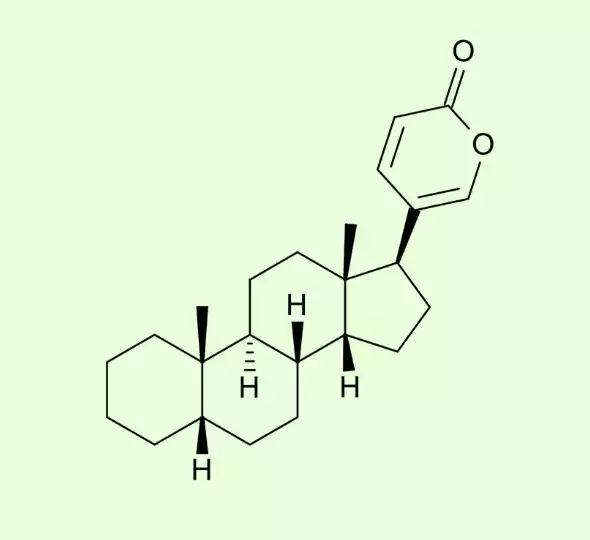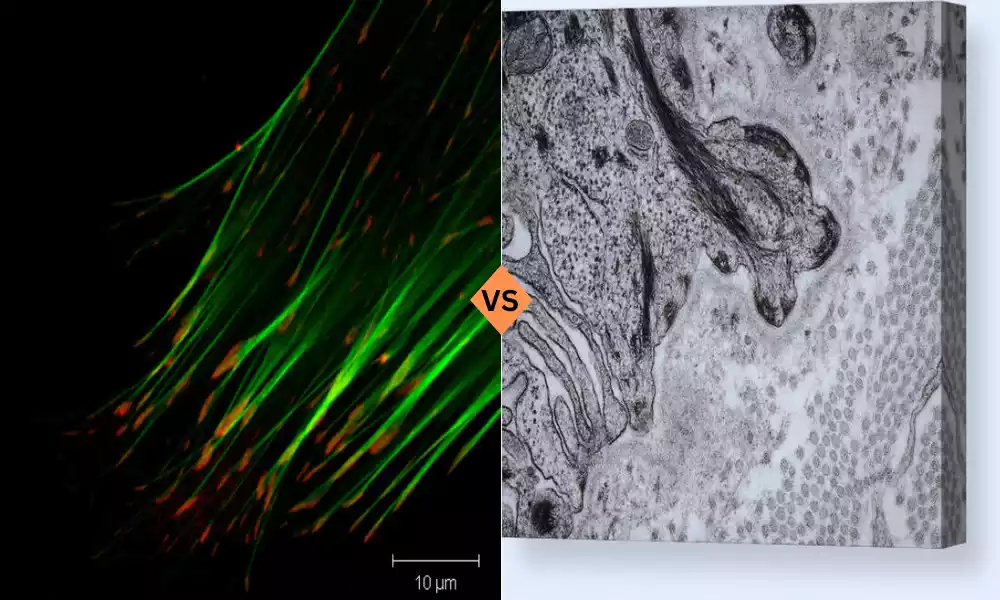Cardenolides and Bufadienolides are two classes of naturally occurring organic compounds with steroid-like structures and shared pharmacological effects, primarily in the realm of cardiac function. Cardenolides, commonly found in certain plants and some animals, have played a significant role in the treatment of heart conditions. Bufadienolides, predominantly sourced from the skin secretion of specific toad species, share similarities with cardenolides but are characterized by their unsaturated lactone ring and higher toxicity.
While both compound classes exhibit positive inotropic effects on the heart, their origins, chemical structures, and medical applications set them apart, making them subjects of extensive research in the fields of chemistry, pharmacology, and medicine.
Definition of Cardenolides
Cardenolides are a class of naturally occurring organic compounds that belong to the cardiac glycoside family. They are primarily found in various plant species, including Digitalis (foxglove), Nerium oleander (oleander), and Strophanthus, as well as in some animals such as toads. Cardenolides are characterized by their steroid-like structure, consisting of a 17-carbon skeleton with a lactone ring at the C-17 position. This structural feature is pivotal to their biological activity and medicinal relevance, particularly in the treatment of heart conditions.

Definition of Bufadienolides
Bufadienolides are a class of naturally occurring organic compounds that belong to the cardiac glycoside family. They are primarily found in the skin and parotid glands of certain toad species, most notably the Asian common toad (Bufo bufo gargarizans) and the Colorado River toad (Incilius alvarius). Bufadienolides share structural similarities with cardenolides, as they consist of a steroid-like 17-carbon skeleton, but they are characterized by an unsaturated six-membered lactone ring at the C-17 position.

These compounds have gained attention due to their positive inotropic effects on the heart, but they are highly toxic and have limited clinical use in modern medicine. Bufadienolides have also been explored for their potential anti-cancer properties.
Comparison table of Cardenolides and Bufadienolides
| Characteristic | Cardenolides | Bufadienolides |
|---|---|---|
| Origin | Plants and some animals | Toads |
| Chemical Structure | Steroid-like, C-17 lactone | Steroid-like, C-17 lactone |
| Lactone Ring at C-17 Position | Saturated (5-membered ring) | Unsaturated (6-membered ring) |
| Primary Sources | Digitalis, oleander, Strophanthus | Asian common toad, Colorado River toad |
| Cardiac Effects | Positive inotropy (increased heart contraction) | Positive inotropy (increased heart contraction) |
| Medical Uses | Treatment of heart conditions (e.g., heart failure, arrhythmias) | Limited clinical use due to toxicity |
| Toxicity | Can be toxic if consumed in excessive amounts | Highly toxic if ingested or mishandled |
| Anti-cancer Effects | Some potential anti-cancer properties due to cell cycle regulation | Limited research on anti-cancer effects |
| Traditional Uses | Used in traditional medicine (e.g., Digitalis) | Used in traditional folk medicine for various ailments |
What are the similarites between Cardenolides and Bufadienolides
Cardenolides and bufadienolides, while distinct in their origins and some chemical properties, share several similarities:
- Steroid-Like Structure: Both cardenolides and bufadienolides have a steroid-like molecular structure, which includes a 17-carbon skeleton with a lactone ring at the C-17 position. This common structural feature is pivotal to their biological activity.
- Positive Inotropic Effects: Both classes of compounds exhibit positive inotropic effects on the heart. This means they increase the force of cardiac muscle contractions. As a result, they have historically been used to enhance cardiac function, particularly in the treatment of heart conditions like heart failure and arrhythmias.
- Natural Origin: Cardenolides are primarily found in certain plant species and are also present in some animals, like toads. Bufadienolides, on the other hand, are predominantly isolated from the skin and parotid glands of specific toad species. Both classes of compounds are of natural origin and have been used in traditional medicine and folk remedies.
While these similarities exist, it’s essential to recognize that they also have significant differences, including the nature of their lactone rings and toxicity levels, which can influence their pharmacological and medical applications.
Medical Significance
The medical significance of cardenolides and bufadienolides:
- Cardenolides:
- Treatment of heart conditions, including heart failure and arrhythmias.
- Positive inotropic effects to improve cardiac muscle function.
- Antiarrhythmic properties.
- Narrow therapeutic window, necessitating close monitoring.
- Bufadienolides:
- Limited clinical use due to high toxicity.
- Potential in cancer research, with anticancer properties.
- Traditional use for various ailments with caution.
- Ongoing research to understand and optimize their applications.
These compounds play a vital role in cardiac care and have intriguing potential in the field of oncology, although their toxic nature requires careful consideration.
Chemical Properties
The chemical properties of cardenolides and bufadienolides are characterized by their structural features, solubility, and chemical reactivity. Here are the key chemical properties of these compounds:
Cardenolides:
- Structural Features: Cardenolides have a steroid-like structure with a 17-carbon skeleton. They feature a lactone ring at the C-17 position, which is typically a saturated, five-membered ring. This structural element is crucial to their biological activity.
- Lipophilicity: Cardenolides are generally hydrophobic, meaning they have low solubility in water. This property influences their absorption, distribution, and elimination in the body.
- Chemical Reactivity: Cardenolides can undergo chemical reactions, such as hydrolysis of the lactone ring, which can affect their bioavailability and pharmacological activity.
Bufadienolides:
- Structural Features: Bufadienolides also have a steroid-like structure with a 17-carbon skeleton. However, they are characterized by an unsaturated, six-membered lactone ring at the C-17 position, which distinguishes them from cardenolides.
- Lipophilicity: Bufadienolides tend to be more lipophilic than cardenolides. Their increased lipophilicity can influence their pharmacokinetics and distribution in the body.
- Chemical Reactivity: Similar to cardenolides, bufadienolides can undergo chemical reactions, including hydrolysis of the lactone ring. Their reactivity may affect their pharmacological properties and metabolic processes in the body.
Understanding these chemical properties is essential in studying the behavior, absorption, and distribution of these compounds in biological systems and in designing potential therapeutic agents.
Pharmacological Effects
Here are the key pharmacological effects of cardenolides and bufadienolides:
Cardenolides:
- Positive Inotropic Effects: They increase myocardial contractility by inhibiting the sodium-potassium pump, enhancing the force of cardiac muscle contractions.
- Antiarrhythmic Properties: They help normalize irregular heart rhythms by influencing the electrical conduction system of the heart.
Bufadienolides:
- Positive Inotropic Effects: Similar to cardenolides, they enhance myocardial contractility by inhibiting the sodium-potassium pump.
- Anticancer Properties: They show promise in cancer research by inducing apoptosis and inhibiting cancer cell proliferation, potentially offering avenues for cancer treatment.
Understanding these effects is critical in evaluating the therapeutic applications of these compounds in cardiology and oncology.
Toxicity and Side Effects of Cardenolides and Bufadienolides
Toxicity and side effects associated with cardenolides and bufadienolides are significant considerations due to the potential risks posed by these compounds, especially when used inappropriately or in excessive amounts. Here’s an overview of their toxicity and side effects:
Cardenolides:
- Narrow Therapeutic Window: Cardenolides have a narrow therapeutic window, meaning there is a fine balance between their therapeutic and toxic doses. This narrow margin necessitates close monitoring and precise dosing.
- Cardiac Toxicity: Excessive consumption of cardenolides can lead to severe cardiac toxicity, resulting in life-threatening cardiac arrhythmias. This includes various types of arrhythmias, such as ventricular tachycardia and atrial fibrillation.
- Gastrointestinal Disturbances: Side effects may include nausea, vomiting, and diarrhea.
- Visual Disturbances: Some individuals may experience visual disturbances, such as a yellow or green color perception, known as xanthopsia.
Bufadienolides:
- High Toxicity: Bufadienolides are highly toxic compounds. Ingesting or mishandling bufadienolides can be life-threatening, and even small quantities can lead to severe toxicity.
- Gastrointestinal Disturbances: Common side effects of bufadienolide exposure include nausea, vomiting, and abdominal pain.
- Arrhythmias: Bufadienolides can induce cardiac arrhythmias, which can be particularly dangerous given their toxicity.
- Seizures: In severe cases, bufadienolide poisoning may lead to seizures and central nervous system disturbances.
When working with cardenolides and bufadienolides, as their toxicity levels are a significant concern. Healthcare providers must closely monitor patients receiving cardenolides, and the clinical use of bufadienolides is limited due to their high toxicity. Any research or application of these compounds must prioritize safety and careful handling to mitigate potential toxic effects.
Role in Cancer Research
Here are the key roles of cardenolides and bufadienolides in cancer research:
Cardenolides in Cancer Research:
- Cell Cycle Regulation: Potential to influence the cell cycle in cancer cells.
- Apoptosis Induction: Ability to induce programmed cell death in cancer cells.
- Anticancer Potential: Investigation of their anticancer properties against various cancer types, with a focus on inhibiting cancer cell growth and promoting cell death.
Bufadienolides in Cancer Research:
- Anticancer Properties: Research into their ability to inhibit cancer cell proliferation, induce apoptosis, and affect signaling pathways involved in cancer development.
- Mechanisms of Action: Study of the complex mechanisms involved in their anticancer effects.
- Enhancing Chemotherapy Sensitivity: Potential to enhance the sensitivity of cancer cells to traditional chemotherapy agents, potentially improving cancer treatment.
While both compound classes show promise in cancer research, their high toxicity requires careful consideration in the development of cancer therapies. Ongoing research seeks to harness their anticancer potential while addressing their safety concerns.
Cardenolides and Bufadienolides in Traditional Practices
In traditional practices, both cardenolides and bufadienolides have been used for various purposes, often rooted in folk medicine and cultural traditions. Here’s a summary of their roles in traditional practices:
Cardenolides in Traditional Practices:
- Historical Use: Cardenolides, particularly those derived from plants like foxglove (Digitalis purpurea), have a history of use in traditional medicine dating back centuries.
- Treatment of Ailments: In traditional medicine, plants containing cardenolides were often used to treat a range of ailments, including heart-related conditions and edema, owing to their diuretic and heart-strengthening effects.
- Cautionary Note: While cardenolides have been used traditionally, their narrow therapeutic window and potential toxicity require careful consideration and monitoring.
Bufadienolides in Traditional Practices:
- Limited Documentation: The traditional use of bufadienolides is generally less documented compared to cardenolides, and their usage is often more region-specific.
- Folk Medicine Application: Bufadienolides have been utilized in some cultures in traditional folk medicine for various purposes, such as the treatment of skin cancer, warts, and pain.
- Caution Advised: Given the high toxicity of bufadienolides, any traditional practices involving these compounds require extreme caution to prevent poisoning or adverse effects.
While these compounds have historical roots in traditional practices, their high toxicity levels call for careful handling and a cautious approach when considering their use in any traditional or modern medical application.
Conclusion
Cardenolides and Bufadienolides, two classes of natural compounds with steroid-like structures, offer unique pharmacological effects, primarily in cardiac function. While cardenolides have found a place in modern medicine for treating heart conditions, their narrow therapeutic window demands close monitoring. In contrast, bufadienolides, despite their high toxicity, hold promise in cancer research due to potential anticancer properties.
Both compounds have historical roots in traditional practices, but their extreme toxicity underscores the importance of caution and further research to harness their therapeutic potential while mitigating risks.































